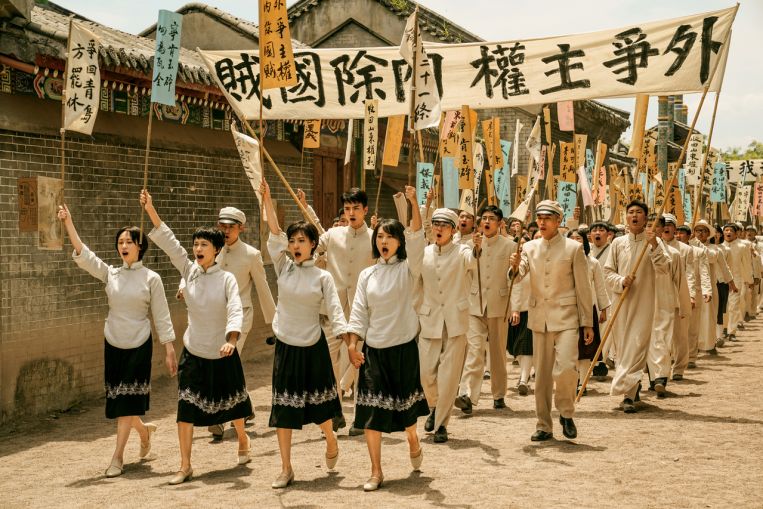1921 (PG13, 138 minutes, opens July 1, 3 stars)
This over-extended portrait of the birth of the Communist Party of China begins with a helpful history montage. Beginning in the 1840s, China’s century of humiliation at the hands of the British, French, Germans and Japanese is shown. National anger reaches a peak when, at the end of the WWI, the Shandong Peninsula, previously German territory, is given to the Empire of Japan instead of being returned to China.
The stage is set for the arrival of the young heroes, ranging from the instantly recognisable (future leaders Mao Zedong, Deng Xiaoping and Zhou Enlai) to the more obscure (Marxist intellectual and organiser Li Da).
Made to mark the 100th anniversary of the founding of the Communist Party of China, the film’s convoluted structure can be blamed on the convoluted period of history it covers – China at the dawn of the 20th century was roiling with nationalists of every political stripe as well as armies, both domestic and foreign.
Co-directors Huang Jianxin and Zheng Dasheng and their screenwriters could have found a cleaner, more focused narrative path, but this option was likely not open. This is the film equivalent of a national monument or parade – it has political goals, in addition to its educational and entertainment targets.
Thankfully, rather than aim cameras at actors re-enacting great moments in socialist speech-making, the flag-waving is mostly seen in its need to name-check people, many of whom are introduced, then never seen again on-screen.
When not cameo-ing what feels like dozens of historical figures, the film is structured like a spy thriller – a natural fit, as most of its protagonists were then viewed as dangerous extremists stoking labour unrest and student demonstrations.
So, a chunk of time is spent on action sequences showing young organisers fleeing police raids, running from strike-breakers, smuggling documents and holding clandestine meetings. There is a car chase, featuring stately 1920s vehicles drifting – yes, drifting, in the style of the anime Initial D – around Shanghai’s neon-lit streets.
Viewers need to note that this is a celebratory piece of art, not a historical document. The film, for example, paints a picture of pure-hearted patriots battling colonialism and capitalism, but ignores the internal power struggles which would trigger purges and the exile of members.













































